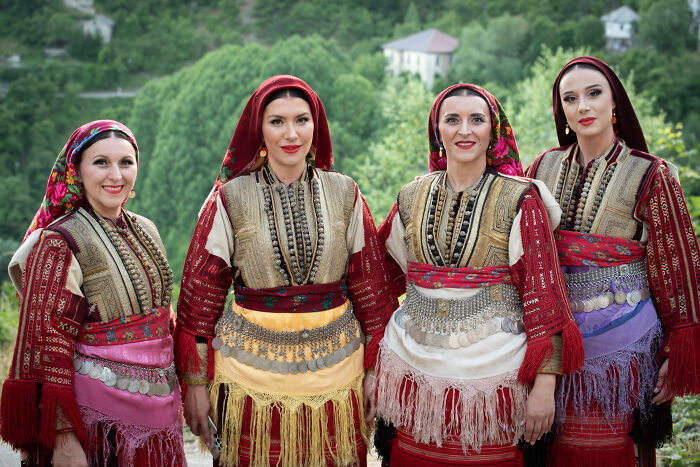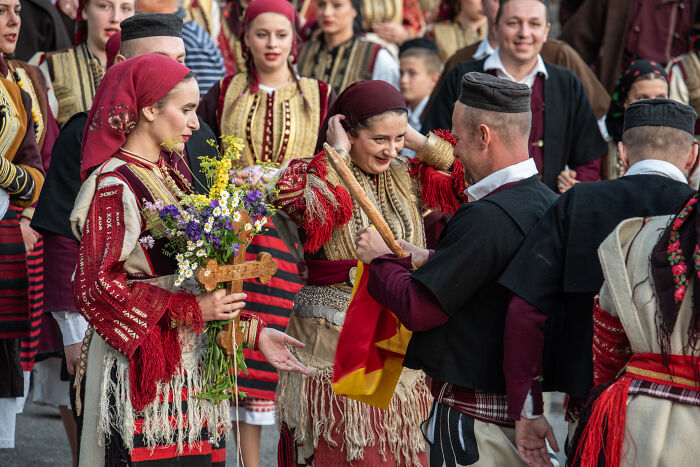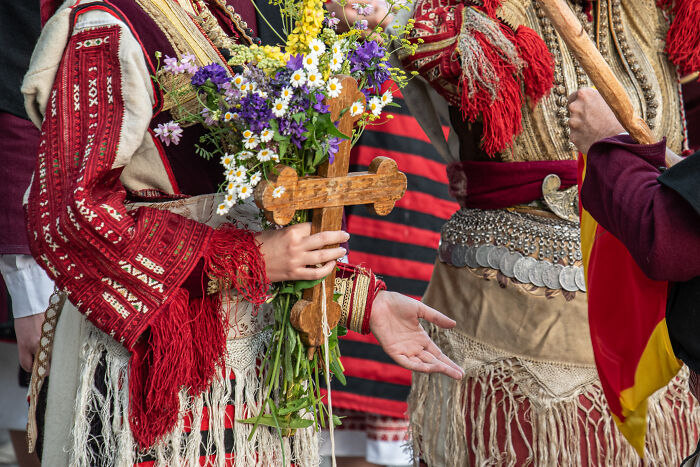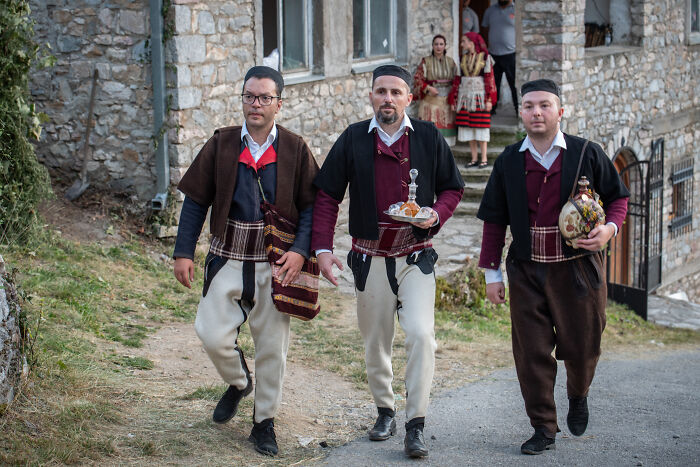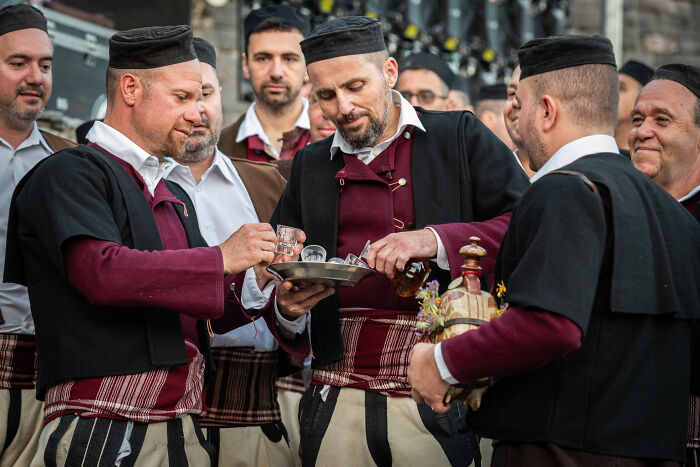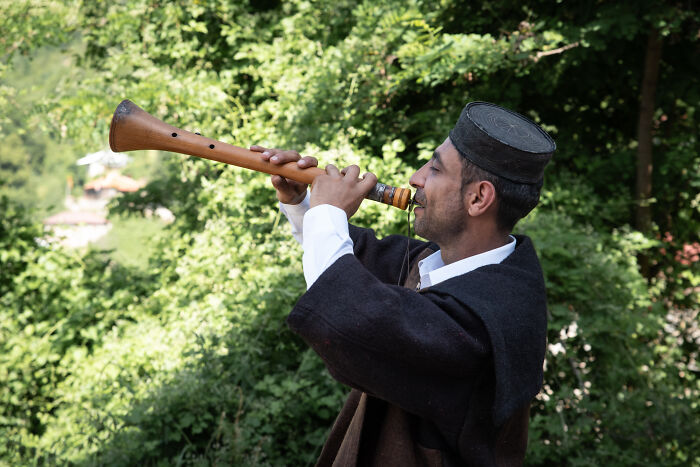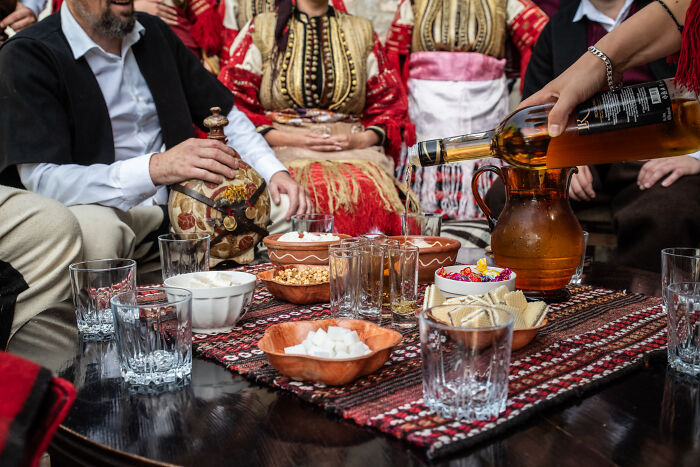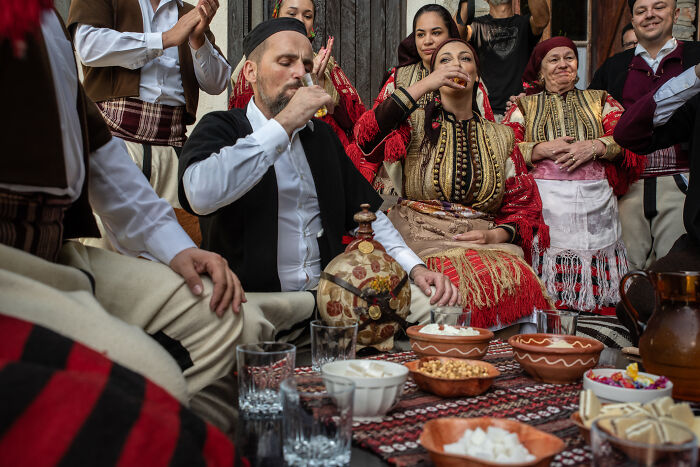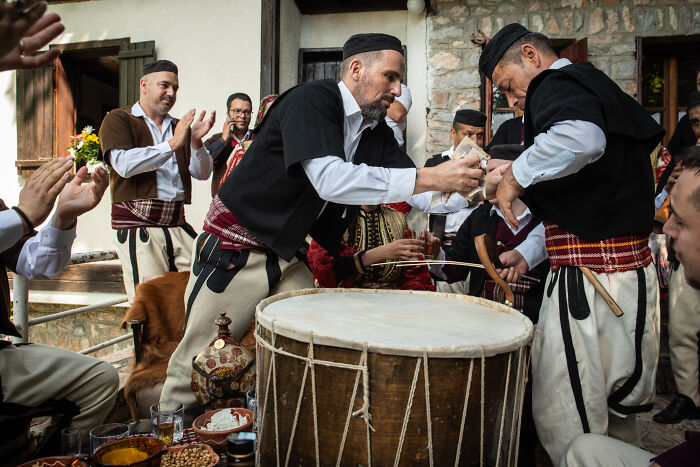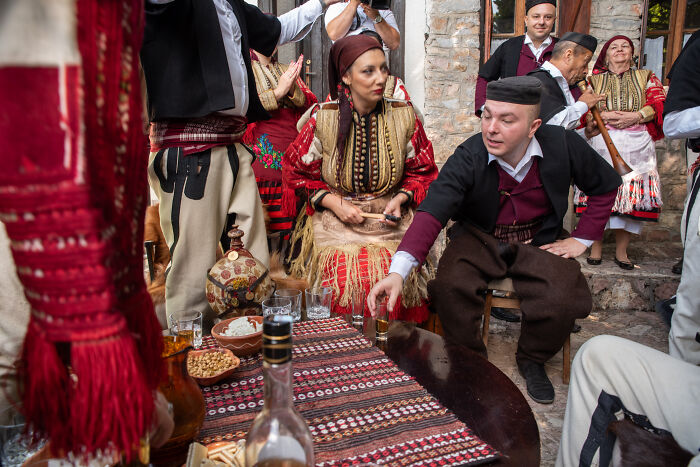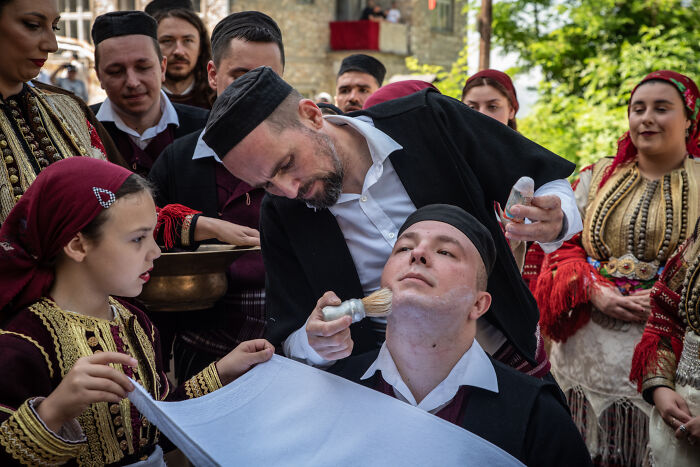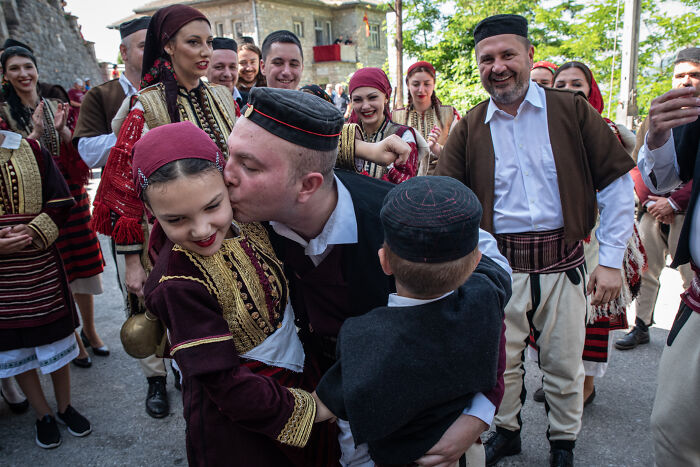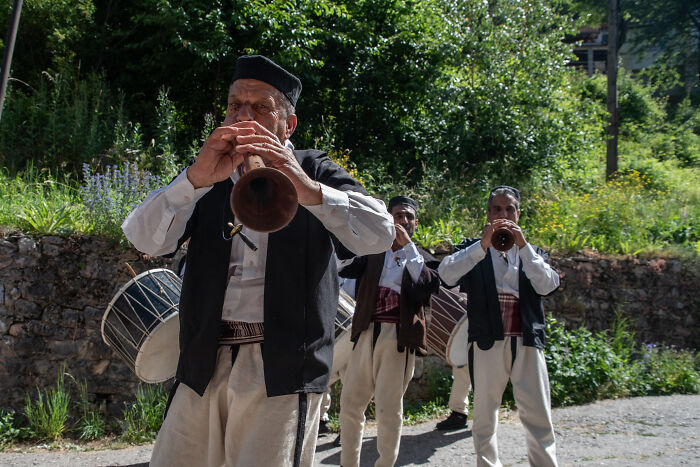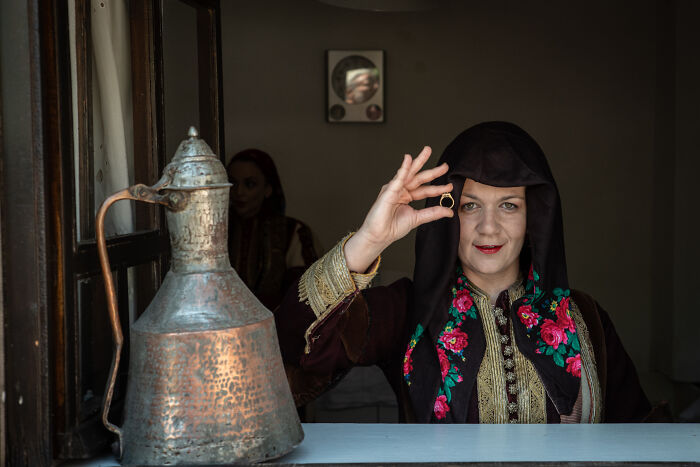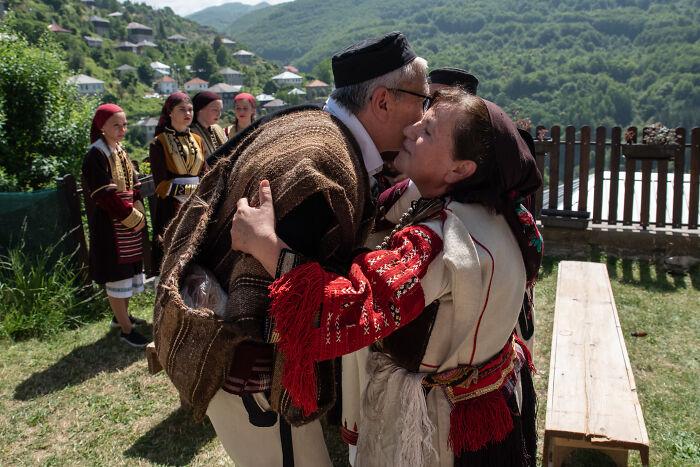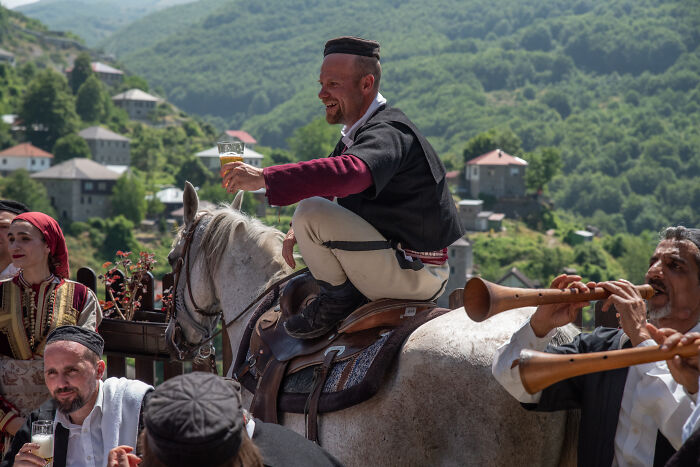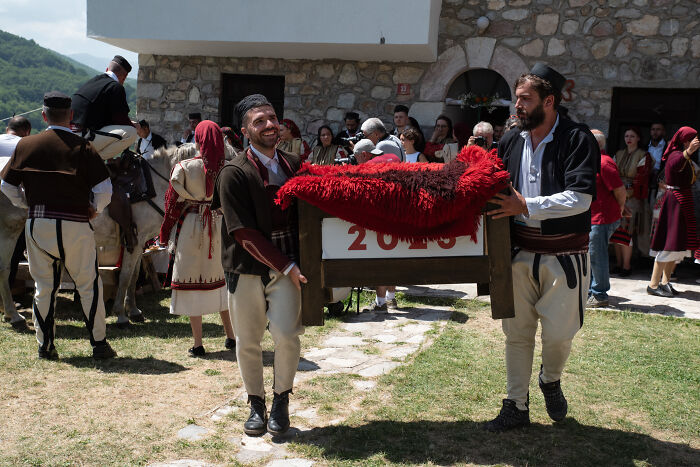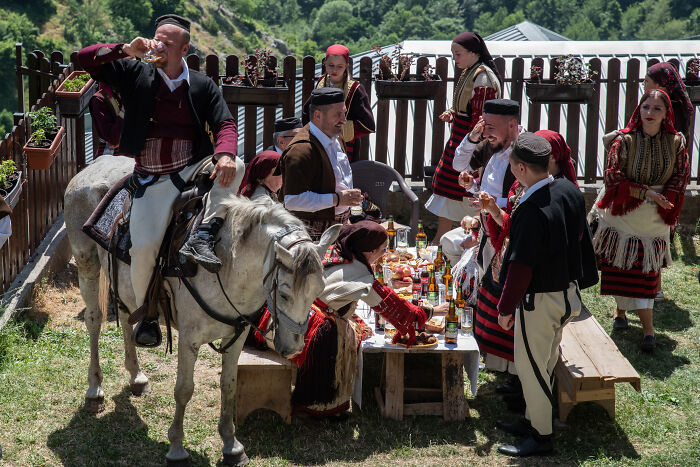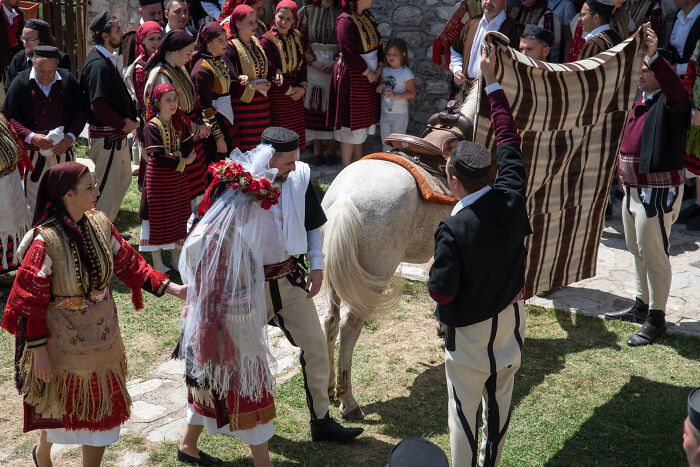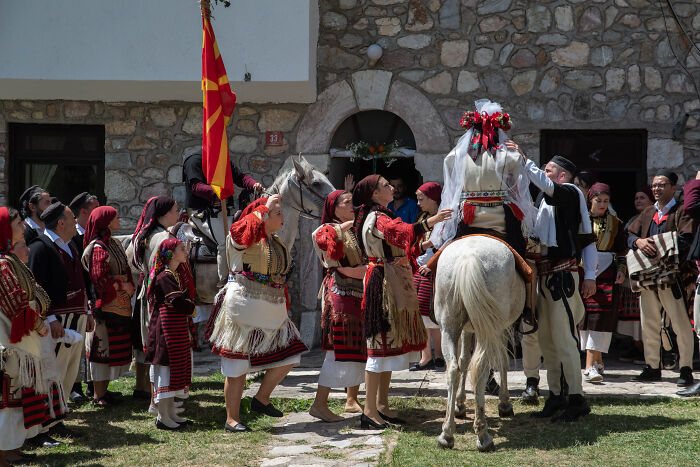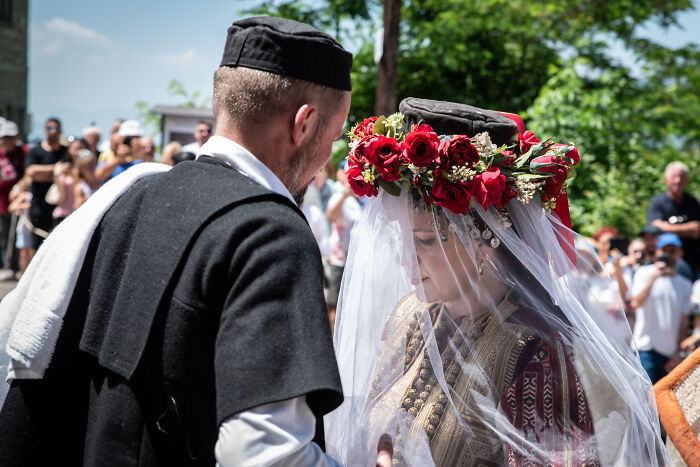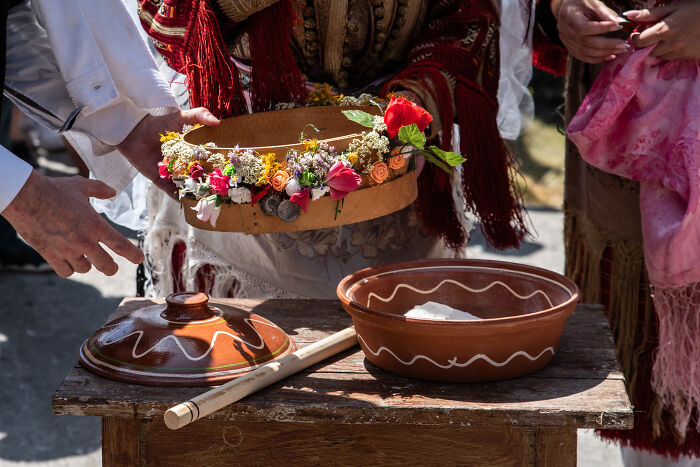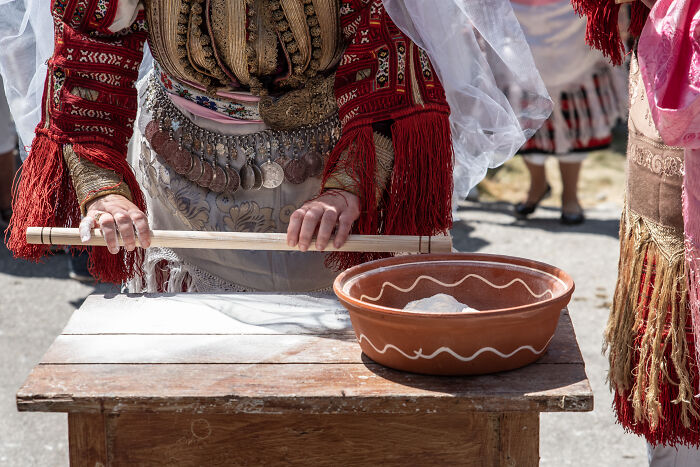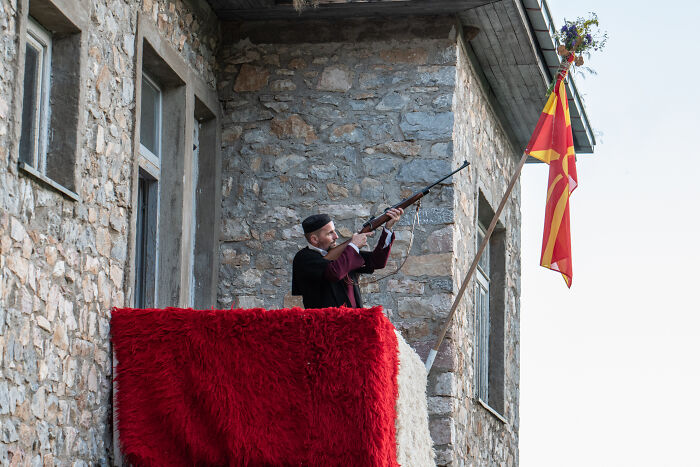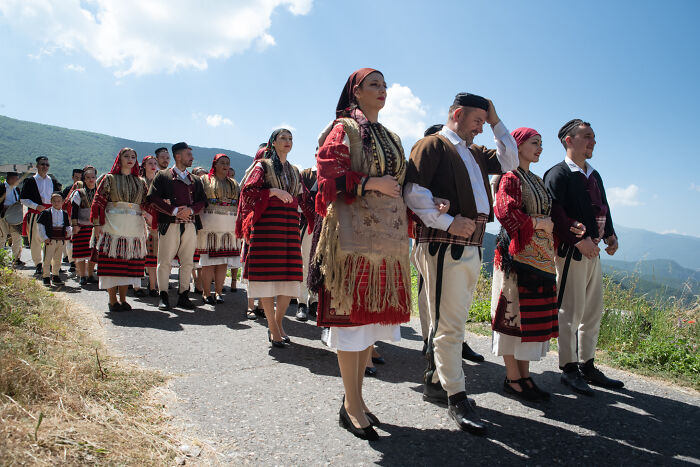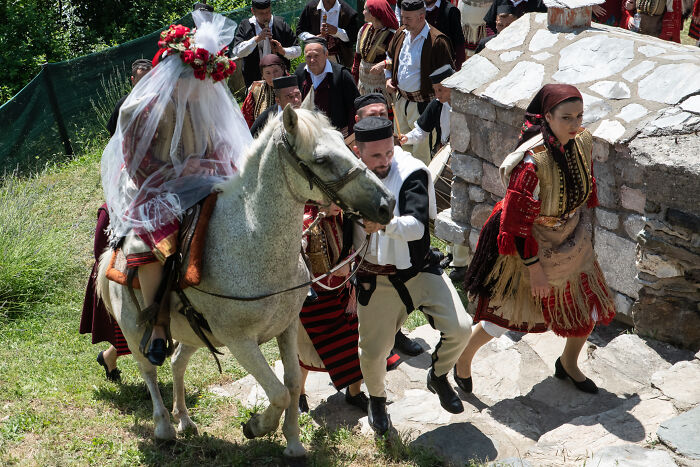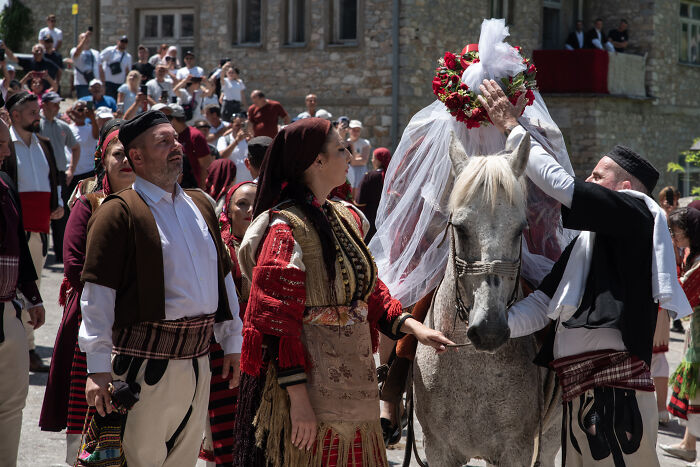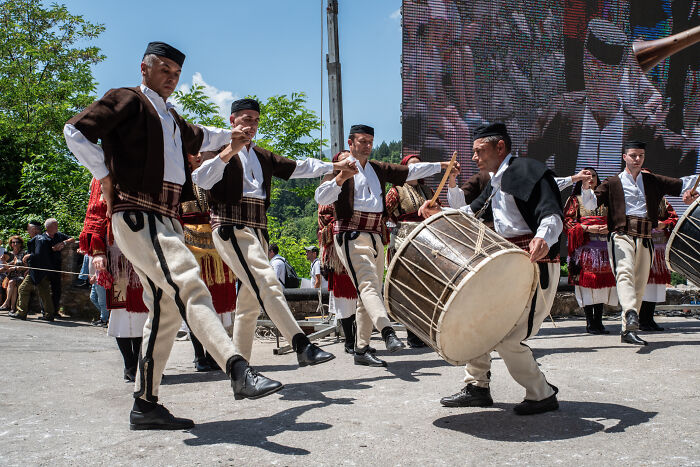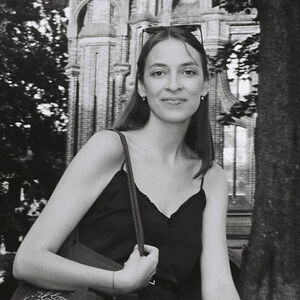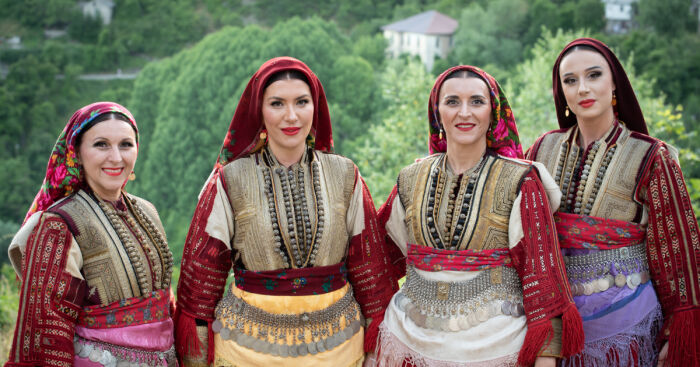
432views
Galichnik Wedding: A Timeless Celebration Of Macedonian Culture And Tradition (28 Pics)
Nestled in the scenic mountains of Macedonia lies a small village known as Galichnik. This village possesses distinct architecture, a vibrant cultural heritage, and the age-old Galichnik wedding tradition, safeguarded by UNESCO.
Every year, on Petrovden or St. Peter's Day, which falls on July 12th, the entire village would come alive to commemorate this special event. However, it was during the Galichnik wedding that the village truly blossomed, attracting more than 5000 visitors from various locations.
This post may include affiliate links.
The wedding ceremony itself was a grand spectacle deeply rooted in tradition. The rhythmic beats of drums and the haunting melodies of the zurla, filled the mountain air. People sang age-old folk songs and danced well-known folk dances, with Teshkoto being the most enchanting of them all. The bride and groom adorned themselves in meticulously crafted traditional attire, skillfully tailored with intricate precision.
While the village might have been sparsely populated throughout the year, the Galichnik wedding served as a beacon of community spirit. Many Galichnik residents had worked abroad in the past, but they always returned home for this extraordinary occasion. It was a time for reunions, festivities, and most importantly, weddings.
Each day of the wedding brought forth unique ceremonies and celebrations. However, the last documented account of such a grand wedding date back to 1936. In the past six decades, the ceremony had transformed into a two-day cultural event held on Saturday and Sunday, with the primary rituals occurring on St. Peter's Day. Participants would don magnificent traditional folk costumes, renowned as the most exquisite in the Balkans.
The wedding rituals and customs held within Galichnik were exclusive to the village alone. From the bridegroom's mother performing the traditional dance, known as Teshkoto, to the symbolic shaving of the groom and the shepherd's folk dance, each element held profound cultural significance. Notably, a cherished tradition involved taking the bride to three springs to fill a water jug, symbolizing a future filled with prosperity and abundance. The groom's family would arrive on horseback, carrying the Macedonian flag, which would then be hoisted by the bride's family as a symbol of unity and respect.
Amidst the festivities, a pivotal moment emerged when the groom stood in front of the bride's house, and through the exchange of rings, she welcomed him into her heart. Subsequently, the bride would prepare herself in an exquisite wedding costume, weighing approximately 40 kilograms, before joining the groom to receive the warm embrace of her mother-in-law.
Throughout the wedding celebration, only two instruments were played, further enhancing the intimate and traditional atmosphere.
The Galichnik wedding transcended a mere union between two individuals; it embodied the village's rich history and culture. It safeguarded the traditions and customs passed down through generations, forging a connection to the past while embracing the present.

 Dark Mode
Dark Mode  No fees, cancel anytime
No fees, cancel anytime 




